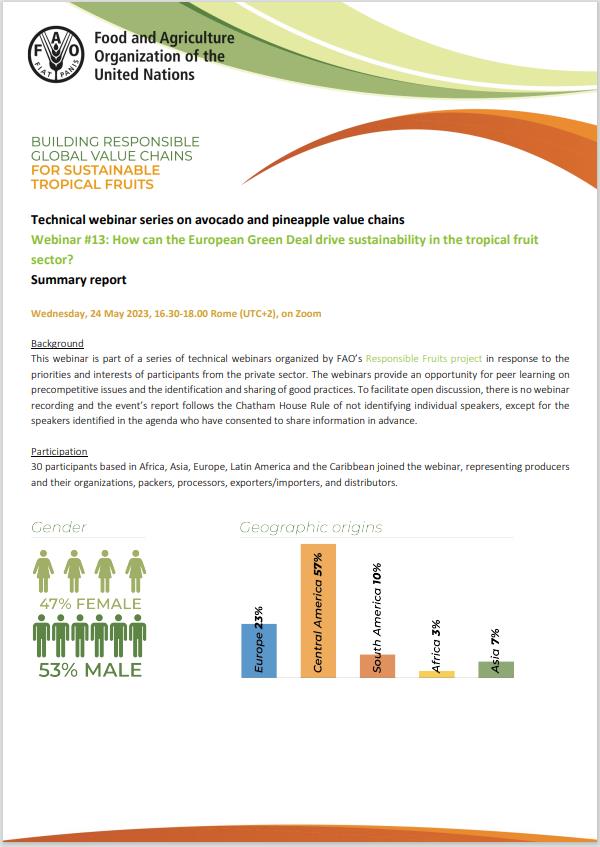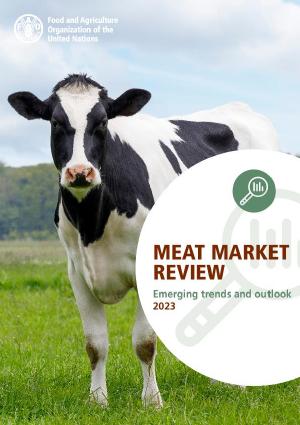
Meat Market Review - Emerging trends and outlook, 2023
12/08/2023
he review finds that world meat production will likely expand in 2023, reflecting an increased supply of animals for slaughter amid favourable production conditions in some leading producing regions. However, global meat trade will likely contract due to sluggish economic growth and high stocks in leading importing countries. Meanwhile, international meat prices have trended downward since July 2023, underpinned by increased export availabilities with a slowdown in import demand.
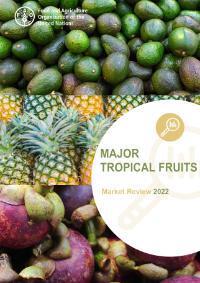
Major Tropical Fruits - Market Review 2022
03/08/2023
This report describes full-year results on developments in global major tropical fruits trade in 2022 and represents an update to the Major Tropical Fruits Market Preliminary Results 2022.
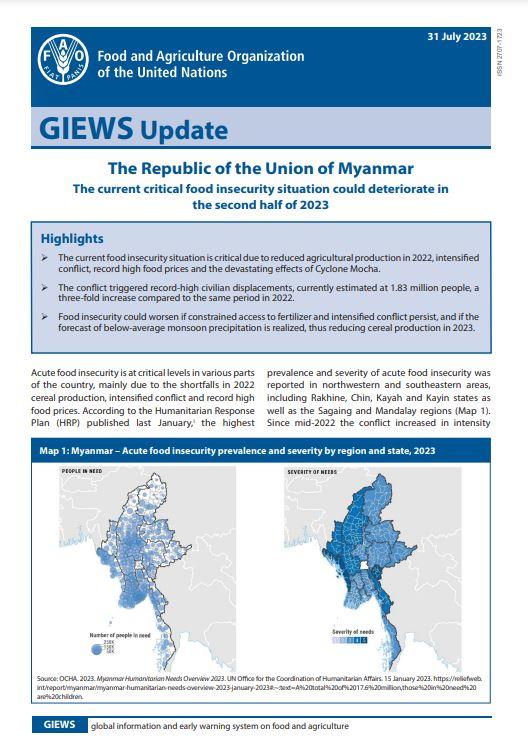
GIEWS Update - Myanmar
31/07/2023
The current food insecurity situation is critical due to reduced agricultural production in 2022, intensified conflict, record high food prices and the devastating effects of Cyclone Mocha. The conflict triggered record-high civilian displacements, currently estimated at 1.83 million people, a three-fold increase compared to the same period in 2022.
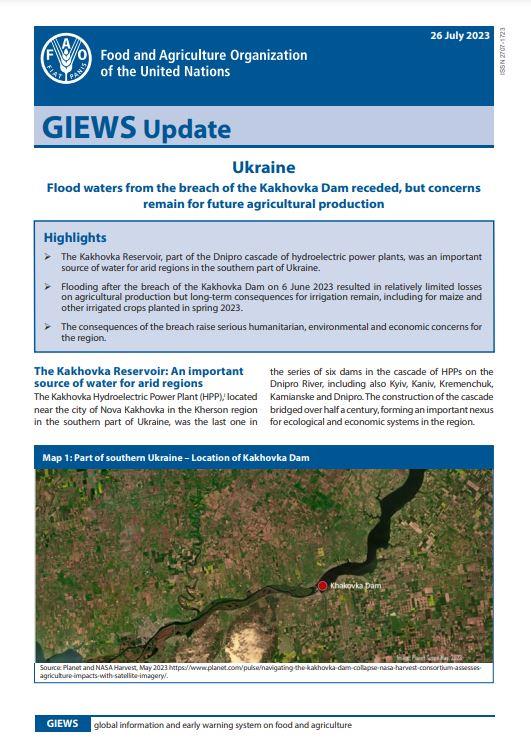
GIEWS Update - Ukraine
26/07/2023
The Kakhovka Reservoir, part of the Dnipro cascade of hydroelectric power plants, was an important source of water for arid regions in the southern part of Ukraine. Flooding after the breach of the Kakhovka Dam on 6 June 2023 resulted in relatively limited losses on agricultural production but long-term consequences for irrigation remain, including for maize and other irrigated crops planted in spring 2023. The consequences of the breach raise serious humanitarian, environmental and economic concerns for the region.
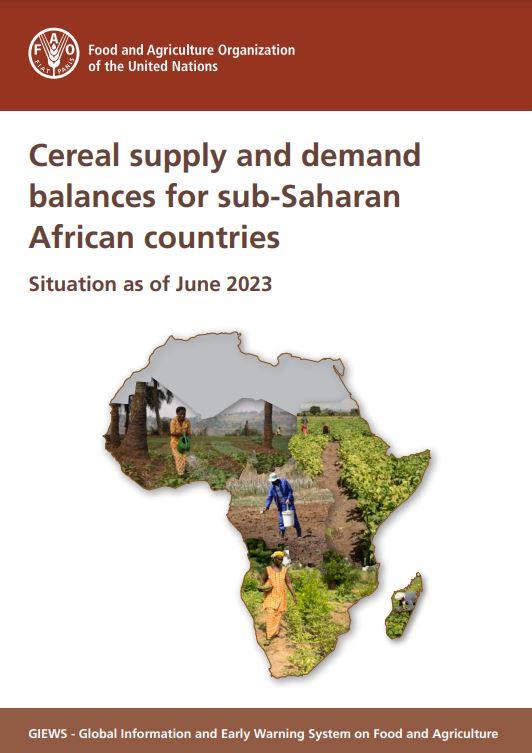
Cereal supply and demand balances for sub-Saharan African countries - June 2023
25/07/2023
The cereal supply and demand balances included in this report present a subset of data from the FAO/GIEWS Country Cereal Balance System (CCBS) database created and continuously kept up to date by the Global Information and Early Warning System on Food and Agriculture (GIEWS) and Basic Foodstuffs teams of the Markets and Trade Division, with data since 1980. It contains annual supply and utilization balances for the main cereals produced and consumed for over 220 countries/areas, from which (sub) regional and global aggregates are drawn. This statistical report contains a subset of cereal country balance sheets (CCBS) data and presents updated cereal supply and demand balances for all sub-Saharan African countries. It complements the information of the FAO/GIEWS Crop Prospects and Food Situation report and is published four times a year with the same schedule. This report is based on information available as of June 2023.
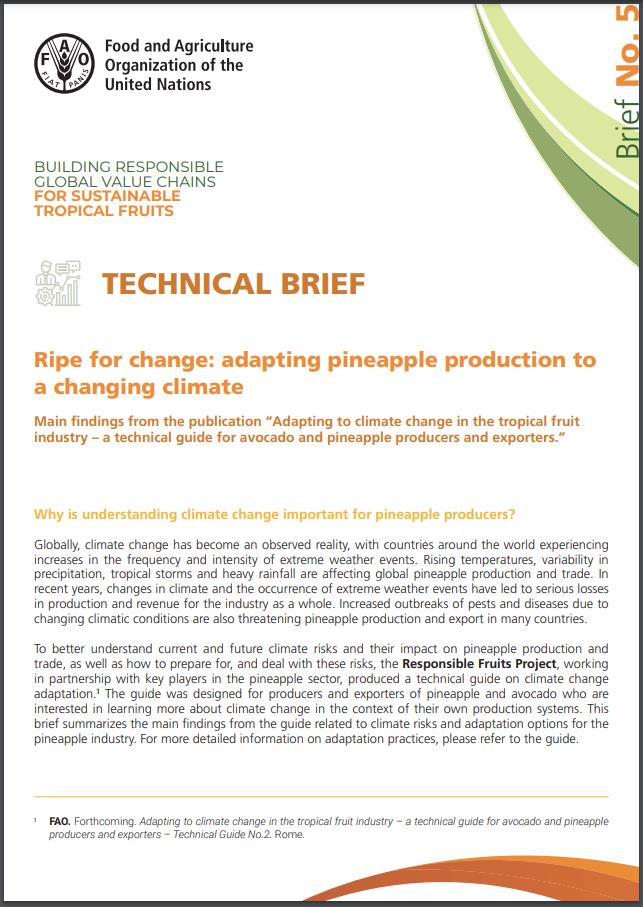
Ripe for change: adapting pineapple production to a changing climate
24/07/2023
To better understand current and future climate risks and their impact on pineapple production and trade, as well as how to prepare for, and deal with these risks, the Responsible Fruits Project, working in partnership with key players in the pineapple sector, produced a technical guide on climate change adaptation. The guide was designed for producers and exporters of pineapple and avocado who are interested in learning more about climate change in the context of their own production systems.
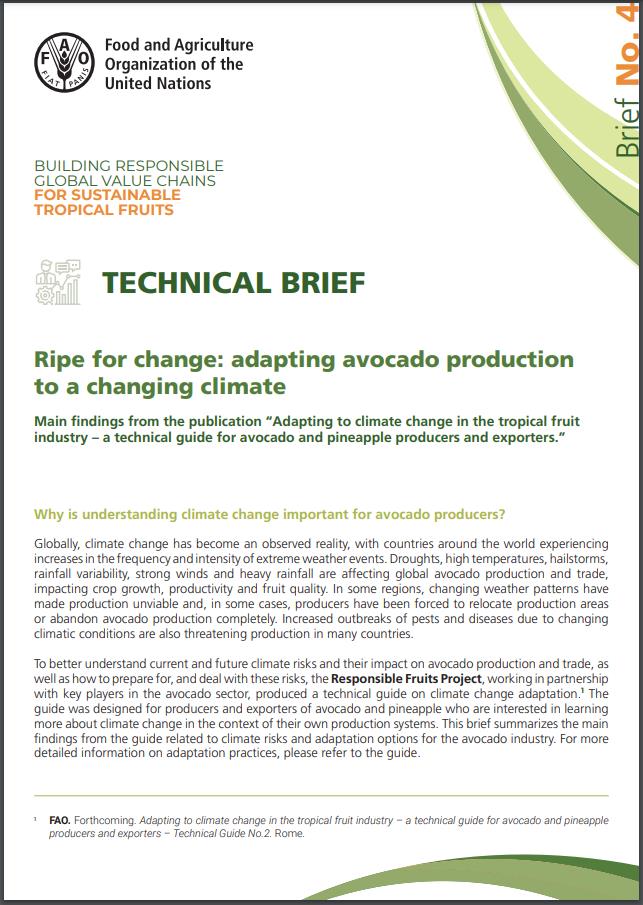
Ripe for change: adapting avocado production to a changing climate
24/07/2023
To better understand current and future climate risks and their impact on avocado production and trade, as well as how to prepare for, and deal with these risks, the Responsible Fruits Project, working in partnership with key players in the avocado sector, produced a technical guide on climate change adaptation.
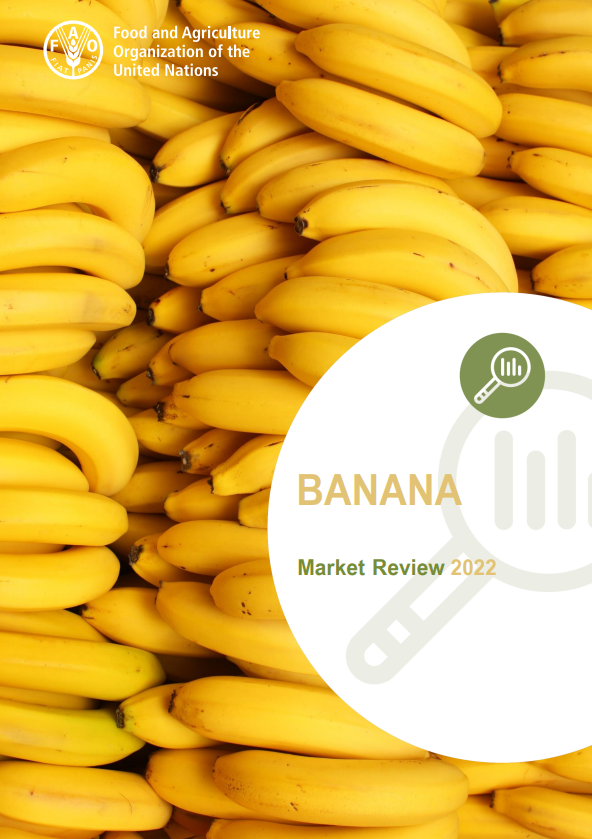
Banana Market Review 2022
14/07/2023
The Banana Market Review is issued on an annual basis to Members and Observers of the Sub-Group on Bananas of the Intergovernmental Group on Bananas and Tropical Fruits, which is a subsidiary body of the Committee on Commodity Problems (CCP).
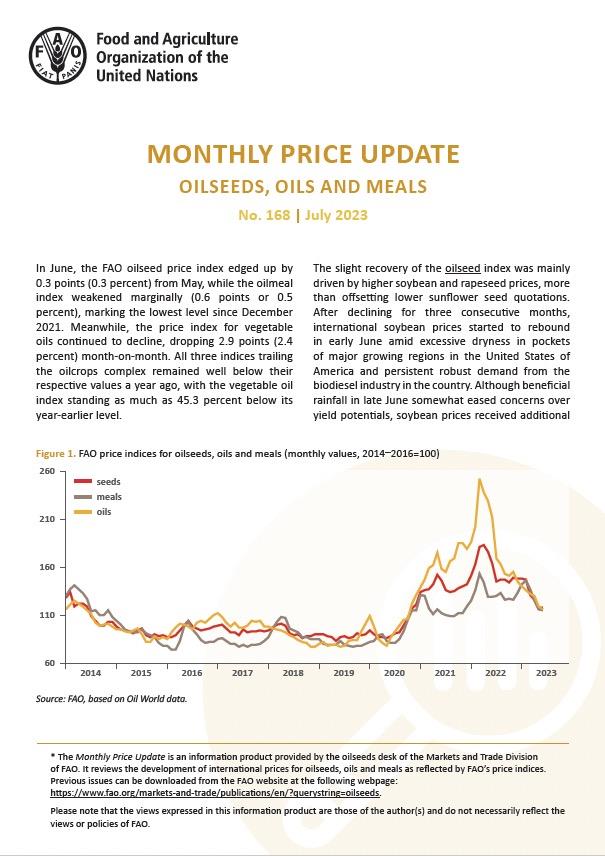
Oilseeds, Oils & Meals. Monthly price update no. 168, July 2023
14/07/2023
The Monthly Price Update is an information product provided by the oilseeds desk of the Markets and Trade Division of FAO. It reviews the development of international prices for oilseeds, oils and meals as reflected by FAO’s price indices.
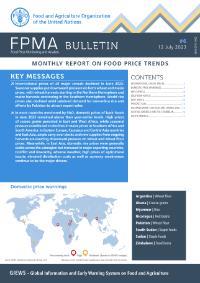
Food Price Monitoring and Analysis (FPMA) Bulletin #6, 12 July 2023 - Monthly report on food price trends
12/07/2023
International prices of all major cereals declined in June. Seasonal supplies put downward pressure on both wheat and maize prices, with wheat harvests starting in the Northern Hemisphere and maize harvests continuing in the Southern Hemisphere. Rice prices also declined amid subdued demand for non-Indica rice and efforts to attract export sales in Pakistan.
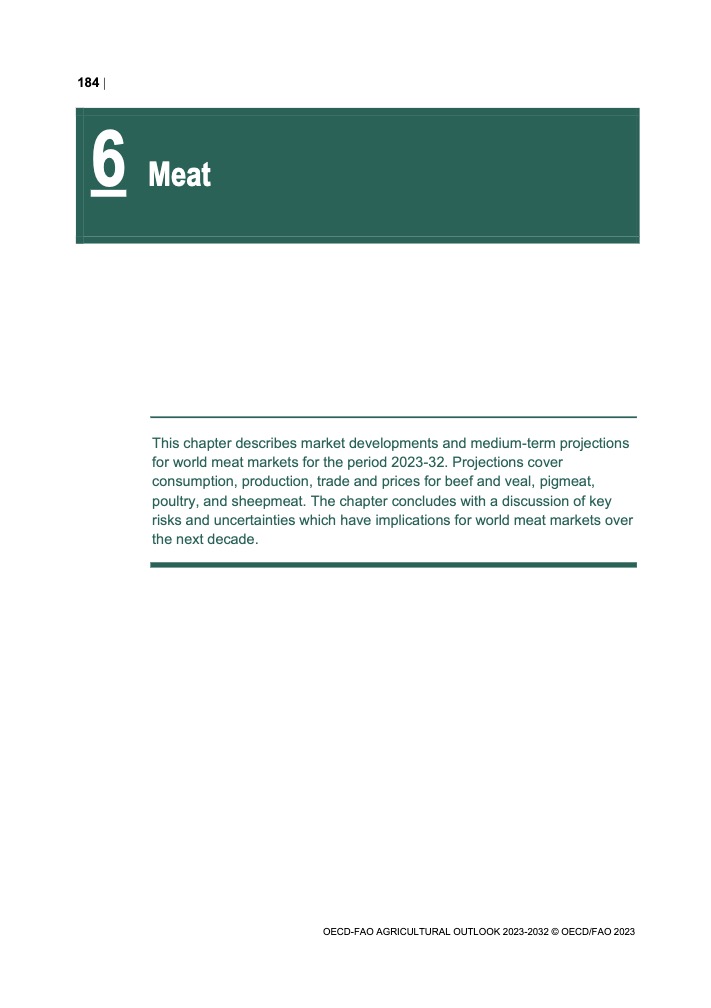
OECD-FAO Agricultural Outlook 2023-2032: Chapter 6 (Meat)
11/07/2023
This chapter describes market developments and medium-term projections for world meat markets for the period 2023-32. Projections cover consumption, production, trade and prices for beef and veal, pigmeat, poultry, and sheepmeat. The chapter concludes with a discussion of key risks and uncertainties which have implications for world meat markets over the next decade.
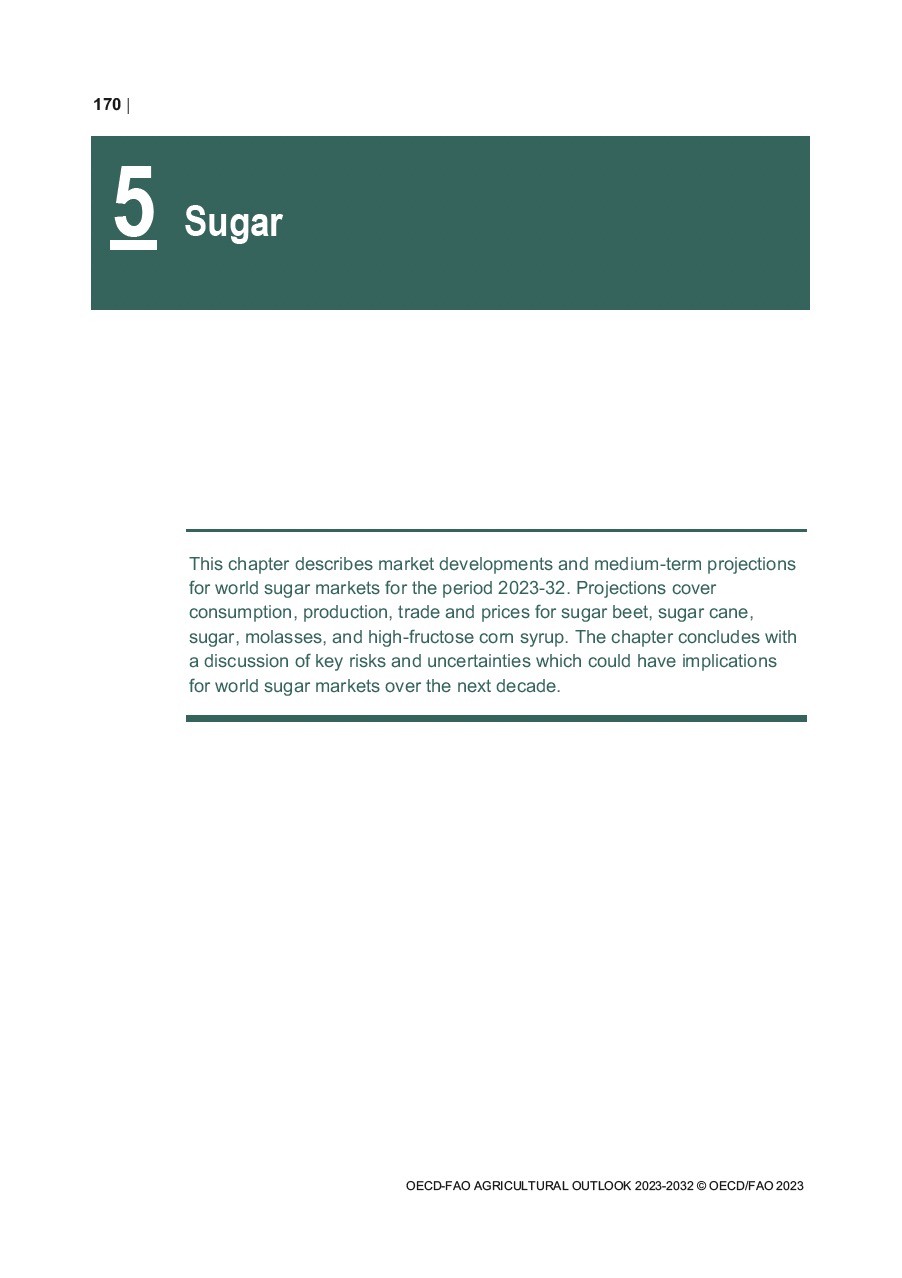
OECD-FAO Agricultural Outlook 2023-2032: Chapter 5 (Sugar)
11/07/2023
This chapter describes market developments and medium-term projections for world sugar markets for the period 2023-32. Projections cover consumption, production, trade and prices for sugar beet, sugar cane, sugar, molasses, and high-fructose corn syrup. The chapter concludes with a discussion of key risks and uncertainties which could have implications for world sugar markets over the next decade.
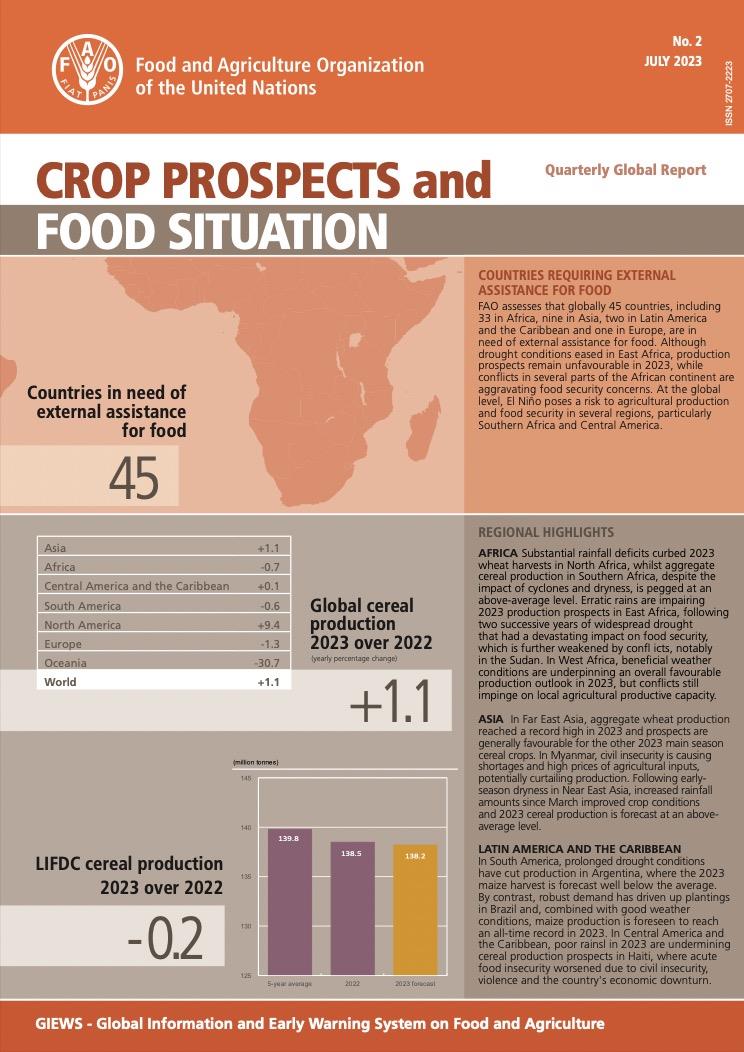
Crop Prospects and Food Situation - Quarterly Global Report, No. 2, July 2023
07/07/2023
FAO assesses that globally 45 countries, including 33 in Africa, nine in Asia, two in Latin America and the Caribbean and one in Europe, are in need of external assistance for food. Although drought conditions eased in East Africa, production prospects remain unfavourable in 2023, while conflicts in several parts of the African continent are aggravating food security concerns.
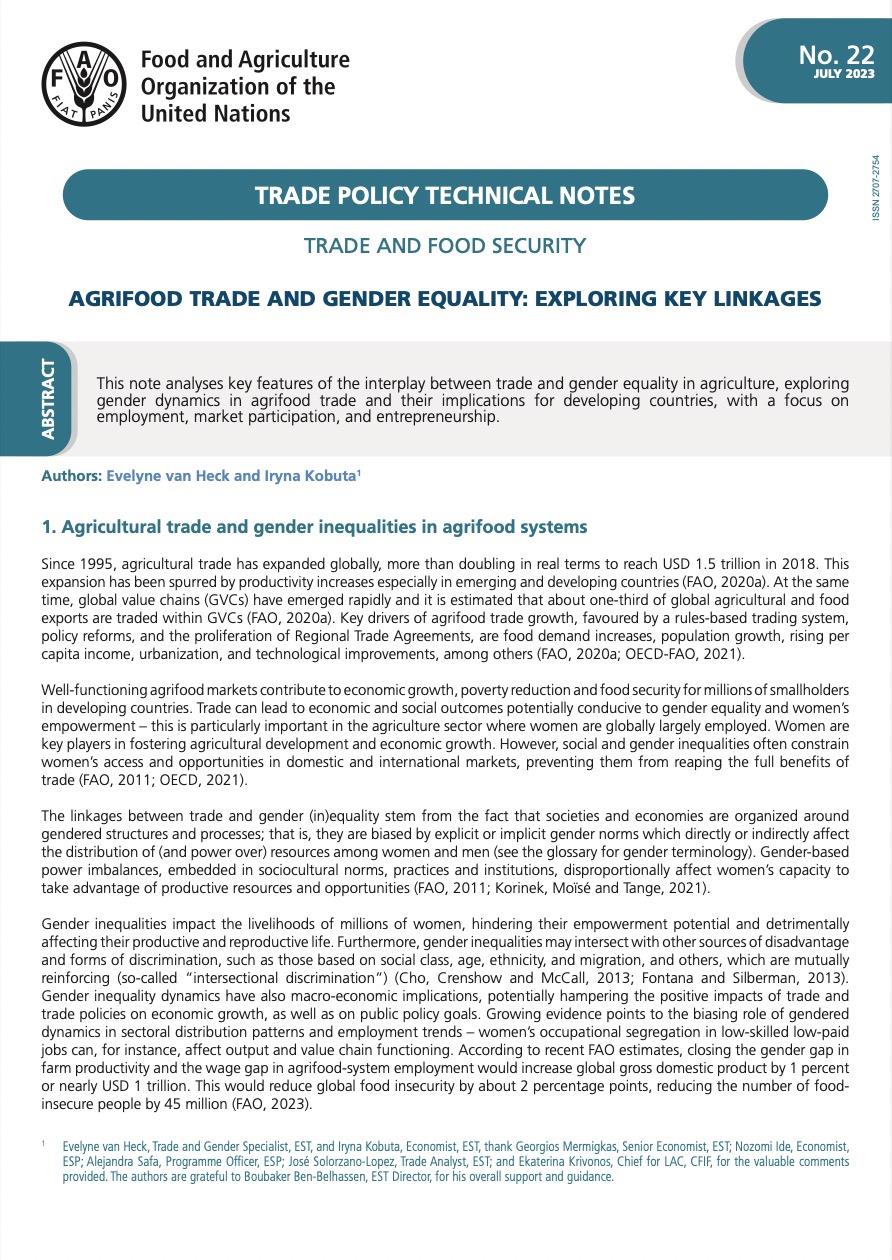
No. 22 Agrifood trade and gender equality: exploring key linkages
07/07/2023
The note analyses key features of the interplay between trade and gender equality in agriculture exploring gender dynamics in agrifood value chains and their implications for developing countries, with a focus on the dimensions of employment, market participation and entrepreneurship. Globally, gender inequalities constrain women’s access to agrifood markets and have an impact on agricultural value chain development, trade performance and economic growth. Agrifood trade can lead to social and economic outcomes potentially conducive to gender equality and women’s empowerment. To this end, gender-responsive trade and agricultural policies can play a role in promoting a more inclusive trade environment, by removing gender barriers to domestic and international agrifood markets.
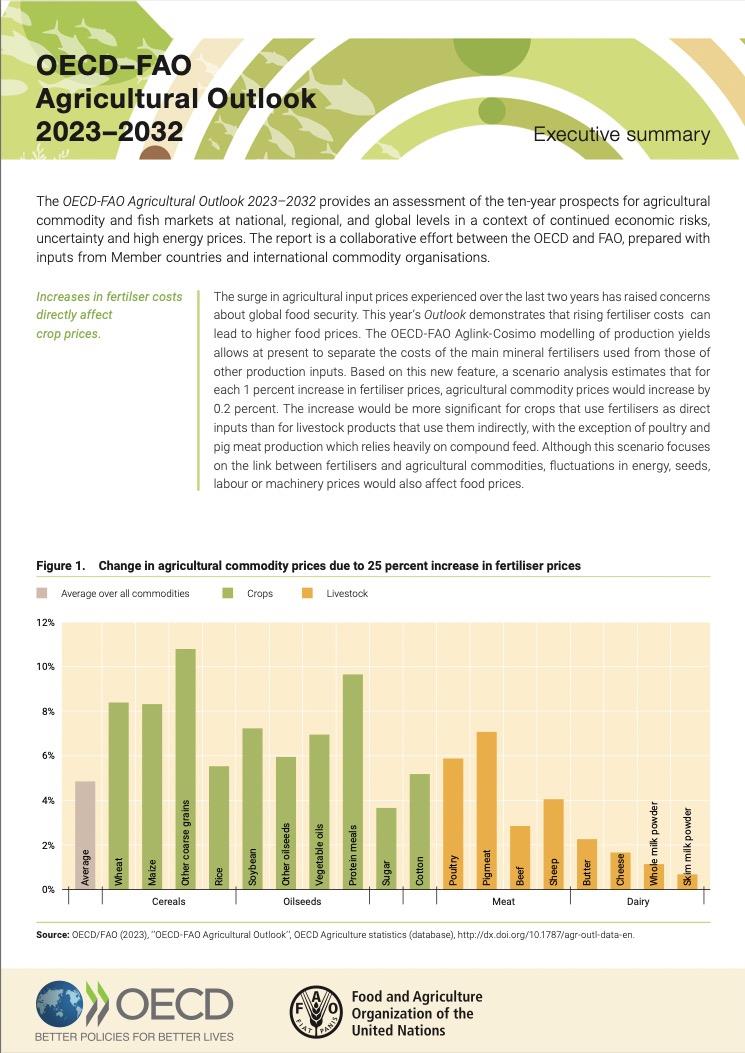
OECD-FAO Agricultural Outlook 2023–2032 - Executive Summary
06/07/2023
The OECD-FAO Agricultural Outlook 2023–2032 provides an assessment of the ten-year prospects for agricultural commodity and fish markets at national, regional, and global levels in a context of continued economic risks, uncertainty and high energy prices. The report is a collaborative effort between the OECD and FAO, prepared with inputs from Member countries and international commodity organisations.
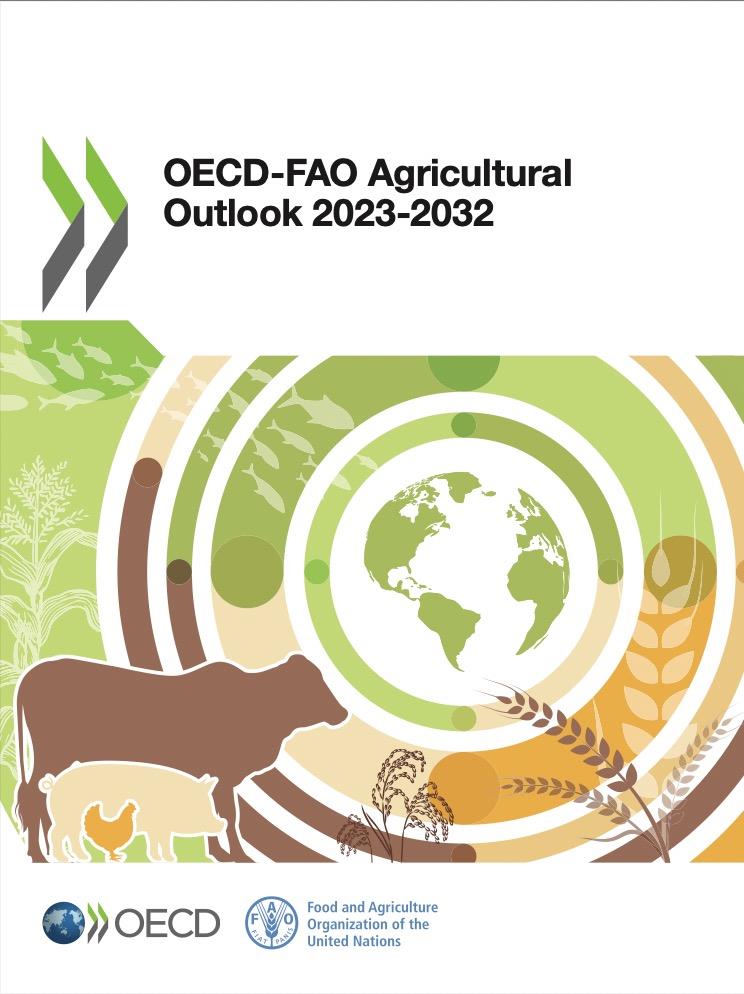
OECD-FAO Agricultural Outlook 2023-2032
06/07/2023
The Agricultural Outlook 2023-2032 is a collaborative effort of the Organisation for Economic Co-operation and Development (OECD) and the Food and Agriculture Organization of the United Nations (FAO). It brings together the commodity, policy and country expertise of both organisations as well as input from collaborating member countries to provide an annual assessment of the prospects for the coming decade of national, regional and global agricultural commodity markets.
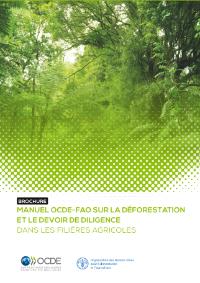
OECD-FAO Business Handbook on Deforestation and Due Diligence in Agricultural Supply Chains - Brochure
06/07/2023
The OECD-FAO Business Handbook on Deforestation and Due Diligence in Agricultural Supply Chains aims to help companies incorporate deforestation and forest degradation considerations in their supply chain due diligence and responsible sourcing efforts and adopt a holistic approach to deforestation risk and forest-positive outcomes.
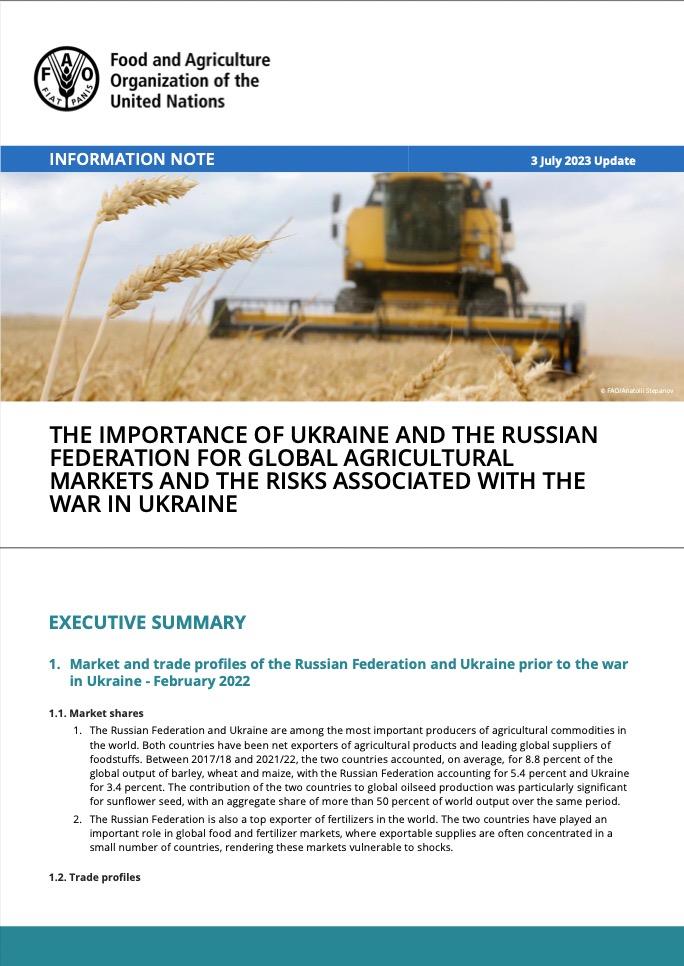
The Importance of Ukraine and the Russian Federation for Global Agricultural Markets and the Risks Associated with the War in Ukraine
06/07/2023
The Russian Federation and Ukraine are among the most important producers of agricultural commodities in the world. Both countries have been net exporters of agricultural products and leading global suppliers of foodstuffs. Between 2017/18 and 2021/22, the two countries accounted, on average, for 8.8 percent of the global output of barley, wheat and maize, with the Russian Federation accounting for 5.4 percent and Ukraine for 3.4 percent. The contribution of the two countries to global oilseed production was particularly significant for sunflower seed, with an aggregate share of more than 50 percent of world output over the same period.

OECD-FAO Business Handbook on Deforestation and Due Diligence in Agricultural Supply Chains
06/07/2023
This handbook was developed by OECD and FAO to help companies embed considerations on deforestation and forest degradation into their corporate due diligence procedures. It is informed by FAO’s extensive work and experience on halting deforestation and forest degradation and promoting responsible governance of tenure.

